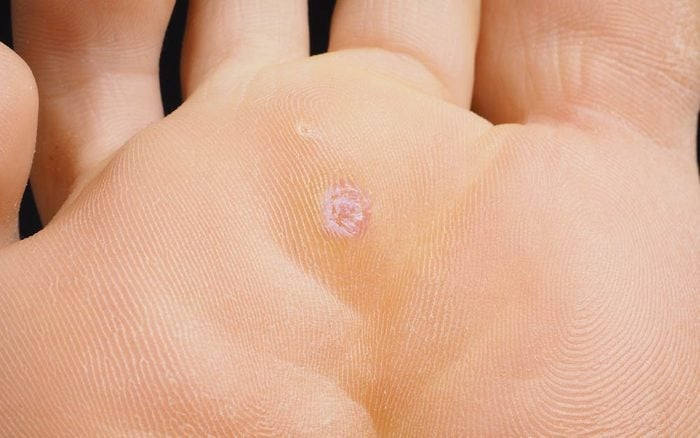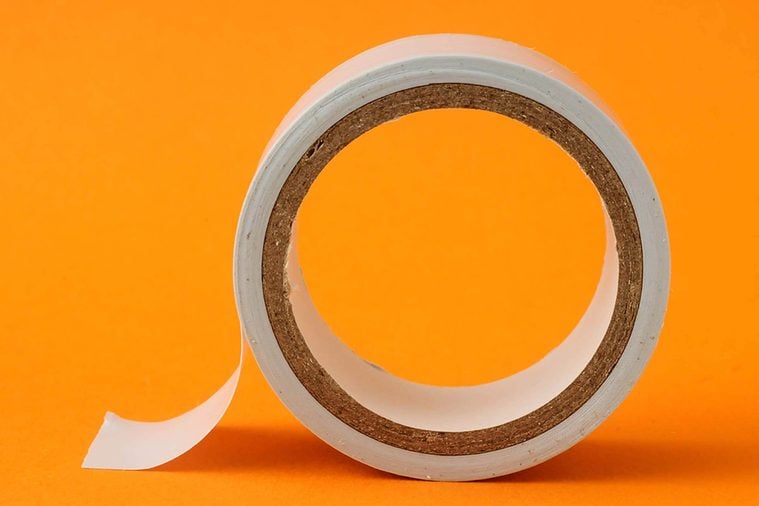Yes, You Can Remove a Plantar Wart with Duct Tape
Updated: Aug. 28, 2019

Plantar warts are difficult to remove and can cause a great deal of pain. This simple at-home trick using duct tape works on hard-to-remove foot warts.
Our editors and experts handpick every product we feature. We may earn a commission from your purchases.
A wart is a noncancerous skin growth caused by a virus, according to the American Academy of Dermatology (AAD). Warts are contagious, meaning they can pass from person to person or even from individual to object (like a towel) to another individual. While anyone can get them—especially if you have a cut or scrape—children, people who bite their nails or have frequent hangnails, and those with compromised immune systems are more prone to getting them, according to the AAD. Many who get them first try treating them with natural remedies for warts you can make at home.
A plantar wart, in particular, grows on the sole of the foot. It tends to grow inward and can cause pressure or pain as you walk. It can feel like having a stone in your shoe that never leaves, according to AAD. Sometimes plantar warts appear in clusters, and tend to be harder to treat than others.
While many warts go away on their own, especially in kids, there are home remedies that are successful in helping to heal them faster. If a wart is not going away, try using a salicylic acid solution. You can find this over-the-counter wart remover in the form of a gel, liquid, or pad, according to the AAD.

An alternative: the duct-tape method. Here’s how it’s done, according to The Survival Doctor’s Complete Handbook, a step-by-step guide to quick treatments for medical emergencies.
- Cut a piece of duct tape the size of the wart.
- Put it over the wart, leaving it on until the tape falls off.
- Replace as needed.
- After six days, soak the wart for fifteen minutes in water.
- Scrape off any dead or loose skin using an emery board or pumice stone
Replace the duct tape and repeat the procedure as necessary for up to two months. If it’s going to work, it will work within that time.
Do not self-treat but see a dermatologist: If you’re not sure if it’s a wart; if it hurts, itches, or bleeds; if you have diabetes; or if the wart appears on your genitals or face. The AAD cautions that some skin cancers actually appear as warts, so don’t be afraid to get it checked out.
After wart removal you may find that your feet are a little dry, try these home remedies for dry feet.

For more first-aid tips, check out The Survival Doctor’s Complete Handbook.
